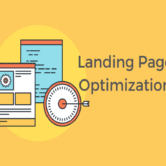
Explain how to test envelope designs for audience engagement.
INTRODUCTION
An envelope is more than a wrapper—it’s a gateway to content, an unspoken invitation to engage. In direct mail marketing, events, and corporate communication, the envelope often determines whether the contents are opened or ignored. Testing envelope designs for audience engagement helps ensure that your message doesn’t just reach your audience—it captivates them. This article outlines strategic, data-driven methods to test envelope designs and optimize their effectiveness.
1. SET CLEAR OBJECTIVES AND METRICS
Before testing, define what success looks like. Are you measuring open rates, response rates, retention, referrals, or brand recall? Clarity on metrics helps evaluate performance accurately. Align these goals with the campaign’s purpose—brand awareness, lead generation, event attendance, or client loyalty.
2. USE A/B TESTING STRATEGIES
A/B testing (or split testing) is one of the most effective methods. Create two or more variations of the envelope design—altering one variable at a time (e.g., color, teaser copy, texture, or shape). Send each version to a similar audience group and compare open and response rates.
3. TEST VISUAL ELEMENTS IN ISOLATION
To understand which design elements drive engagement, isolate specific aspects such as:
- Color schemes
- Typography
- Placement of logos or images
- Size and shape
- Foil, embossing, or textures
Tracking each version’s impact helps you identify which visual choices resonate most with your audience.
4. EXPERIMENT WITH TEASER COPY AND HEADLINES
Short, persuasive messages like “You’re Invited,” “Open for Something Special,” or “Exclusive Offer Inside” can dramatically increase curiosity. Test different headline tones—formal vs. playful, direct vs. mysterious—to determine which yields the best engagement.
5. INCORPORATE QR CODES OR PURL TRACKING
Integrate QR codes, personalized URLs (PURLs), or unique coupon codes on the envelope. When recipients interact with these digital tools, it allows you to track conversions directly linked to the envelope design. This bridges offline engagement with measurable digital analytics.
6. SURVEY YOUR AUDIENCE FOR FEEDBACK
Follow up with a short survey post-campaign, especially in B2B environments. Ask about first impressions, design appeal, and what compelled them to open the envelope. This qualitative data adds context to quantitative results.
7. ANALYZE ENGAGEMENT BY SEGMENT
Break down test results by demographics (age, gender, location), psychographics (interests, lifestyle), and client type (prospective vs. existing). This reveals which designs appeal to which segments, allowing more targeted and effective design choices in the future.
8. USE CONTROL GROUPS TO VALIDATE RESULTS
Always maintain a control group that receives a standard or past version of the envelope. This allows you to benchmark new designs against tried-and-tested formats, ensuring your changes genuinely enhance performance.
9. MONITOR DELIVERY TIMING IMPACTS
Test whether delivery day or timing (weekday vs. weekend, morning vs. afternoon) affects engagement. Sometimes, the same envelope design can perform differently depending on when it arrives.
10. REVIEW OPEN RATES WITH MAIL TRACKING SERVICES
Postal tracking services can estimate open rates based on scans, delivery timestamps, and barcode systems. Some providers offer insights into mail handling speed and response triggers, helping you fine-tune delivery coordination.
CONCLUSION
Testing envelope designs for audience engagement is both a science and an art. Through structured experimentation, data collection, and feedback analysis, you can refine design elements that capture attention, provoke curiosity, and drive action. In today’s cluttered communication space, envelope testing helps your message break through the noise—and land with impact.
HASHTAGS
#EnvelopeDesign #AudienceEngagement #DirectMailMarketing #ABTesting #DesignOptimization #MailStrategy #OpenRates #CreativeTesting #MarketingInnovation #TeaserCopy #QRTracking #ClientFeedback #DesignAnalytics #CampaignPerformance #PrintMarketing #UserExperienceDesign #CustomerInsights #TargetedMarketing #MailEngagement #ResponseRates #BrandPerception #DesignTesting #PostCampaignAnalysis #DataDrivenMarketing #MarketingStrategy





